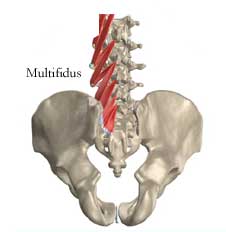Low back pain is prevalent in over 80% of people and can be caused by so many things. We know it is much more than just anatomy but can be very involved, it is complicated and quite frankly, hard to treat.
For someone who struggles with chronic low back pain, finding ways to help manage your pain can be a little bit of trial and error. There is no silver bullet and believe that different things can work for different people. In extremely simple terms, the goal of treating low back pain is to calm down pain, and find effective ways to move is the name of the game. If someone does come trying to sell you on a magic treatment that will cure you without going through the process mentioned above, I would tell you to run far away. (and then give me their name and let me beat them up)
Today, we are going to discuss functional dry needling (FDN) and its part in the treatment of low back pain.
FDN is a modality or tool used to treat musculoskeletal pain by targeting trigger points in our muscles as well as addressing our central nervous system. For more information on Dry Needling 101, here is a great article we published with more information. FDN is thought to work a couple of different ways.
Addresses trigger points
FDN uses filiform needles to go down into muscle bellies and trigger points. Trigger points are tight bands in our muscles that can cause pain and ineffective muscular contractions. When the needle is inserted into the trigger points, we can cause a twitch response, or a rapid relaxing or releasing of the tightness.
Just like we get massages and push down on tight muscles with our hands, foam rollers, lacrosse balls etc, dry needling is a way to get down to a very specific part of our muscle to do the same thing.
Control+alt+delete
The other mechanism in which FDN is effective is what I call the “control-alt-delete” method. Allowing a needle to go down into our muscles is a way we can address our central nervous system (our brains and our nerves). It is proven that when someone suffers from chronic pain, our brains can change. They become like angry den mothers and become very protective of certain areas of our bodies, even when they shouldn’t be. This can cause more tension and guarding, whether there is a threat there or not. FDN has served as a great way to allow down regulating of our brains and nerves to decrease tension and guarding. A “control+alt+delete” of our CNS or a bit of a restart.
Why our low backs?
To understand how FDN can be a wonderful treatment for low back pain, it is important to understand a little more of the anatomy in our spines. There are a multitude of muscles in our backs that can be painful, but the kicker of them all is a muscle group called your multifidus. These are small muscles that lie at the deepest part of our backs. They are responsible for stabilizing our vertebra, they help in rotation and extension of our backs and are activated prior to almost all movement we do, even eye movements. These guys are also extremely hard to train, isolate and treat and can be a great contributing factor to chronic pain based on their location and their jobs.
The main area of treatment we address when dry needling low backs is your multifidus. With FDN, we are able to take the needles all the way down to these muscles, address tension and can even use e-stim to aid in activating and resetting these muscles that are so rarely addressed.
Here is a video of FDN used in our clinic to treat your multifidus!
It is important to note that FDN is never a stand alone treatment. FDN is a tool to give clients a window of opportunity with less pain and guarding in order to access or create better movement patterns. If you have had back pain and haven’t tried dry needling, finding a licensed practitioner near you might be worth a shot! Ensuring this is paired with a custom and thoughtful movement plan is key in ensuring the most benefit for you and your pain.
